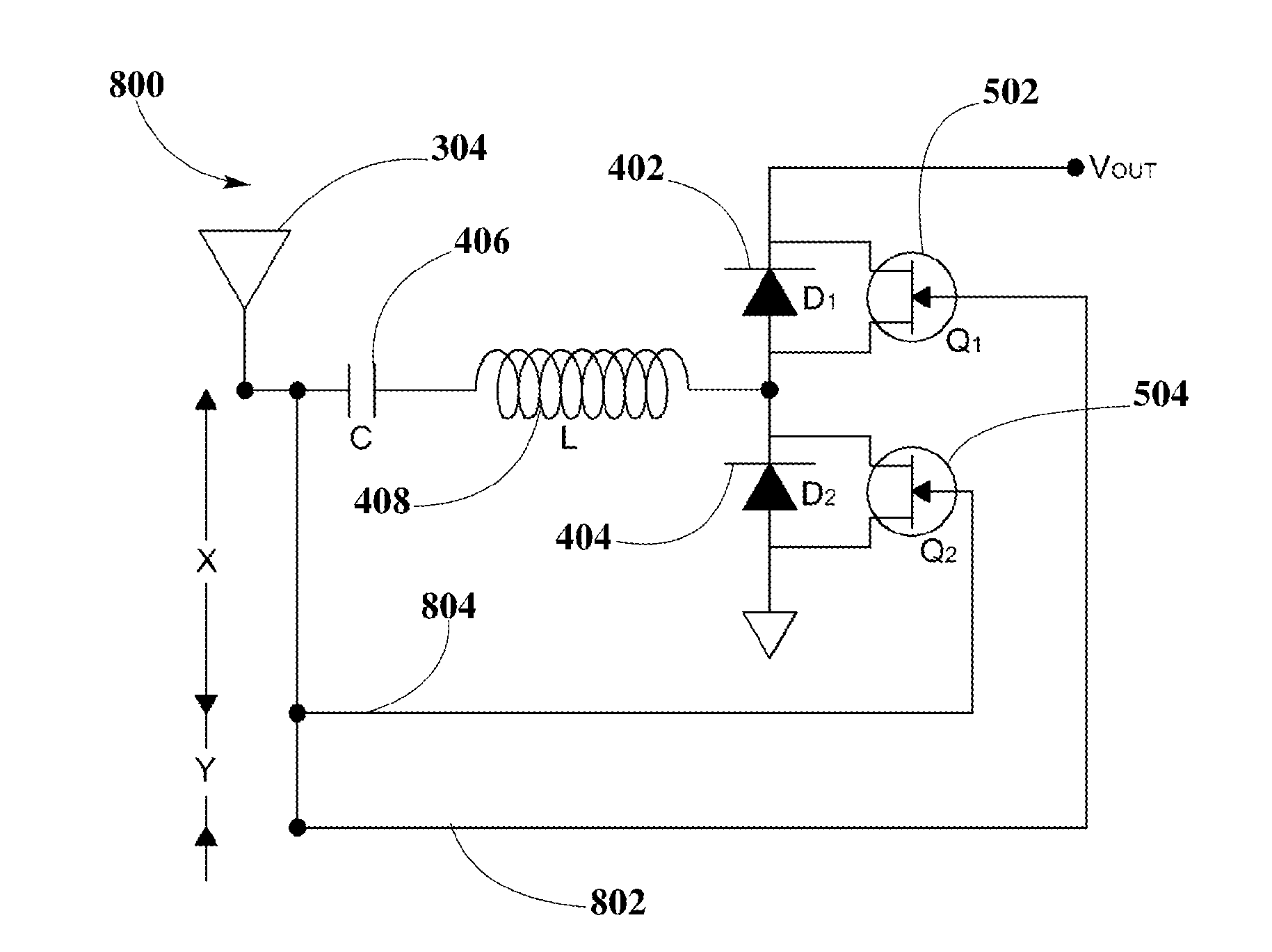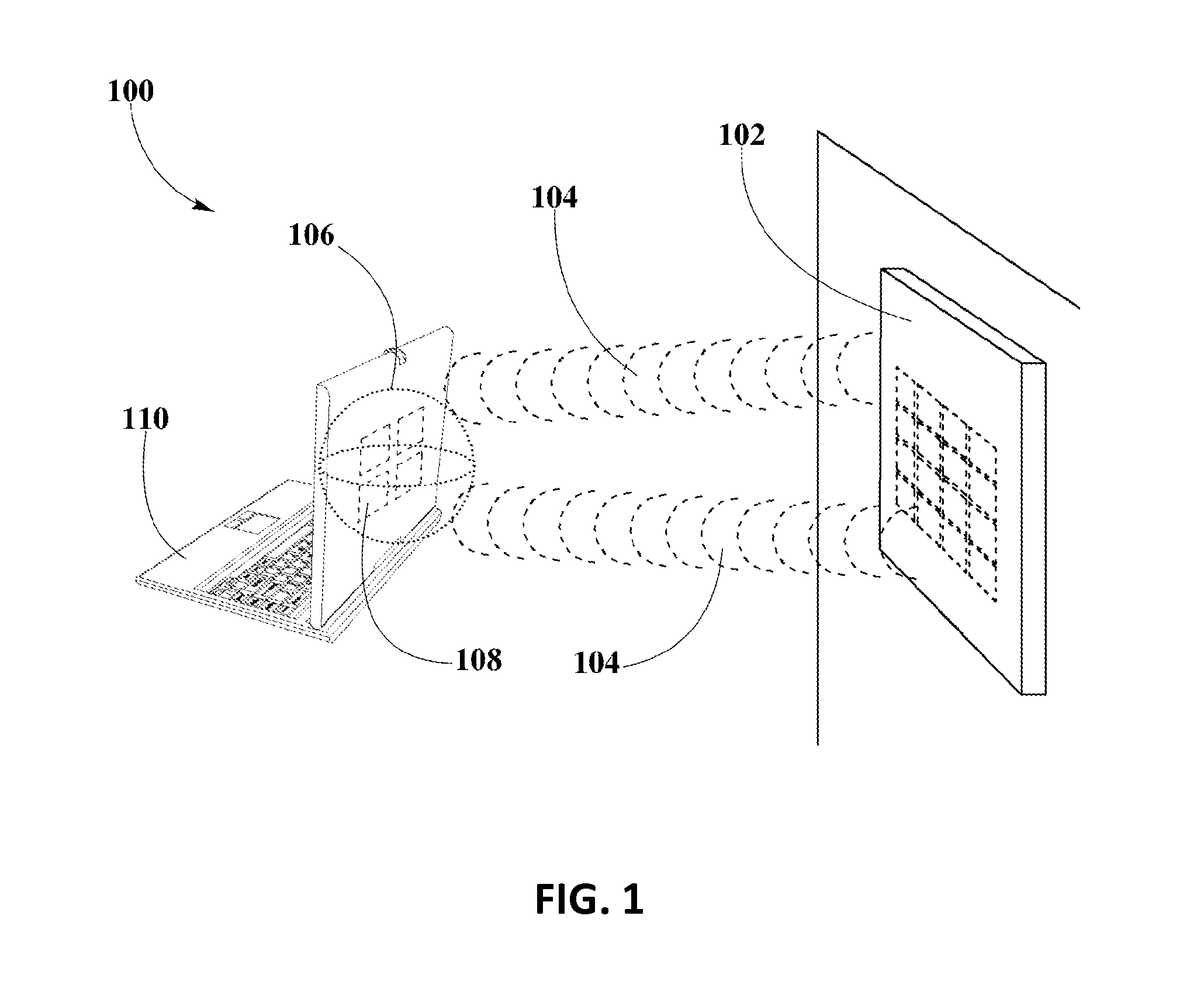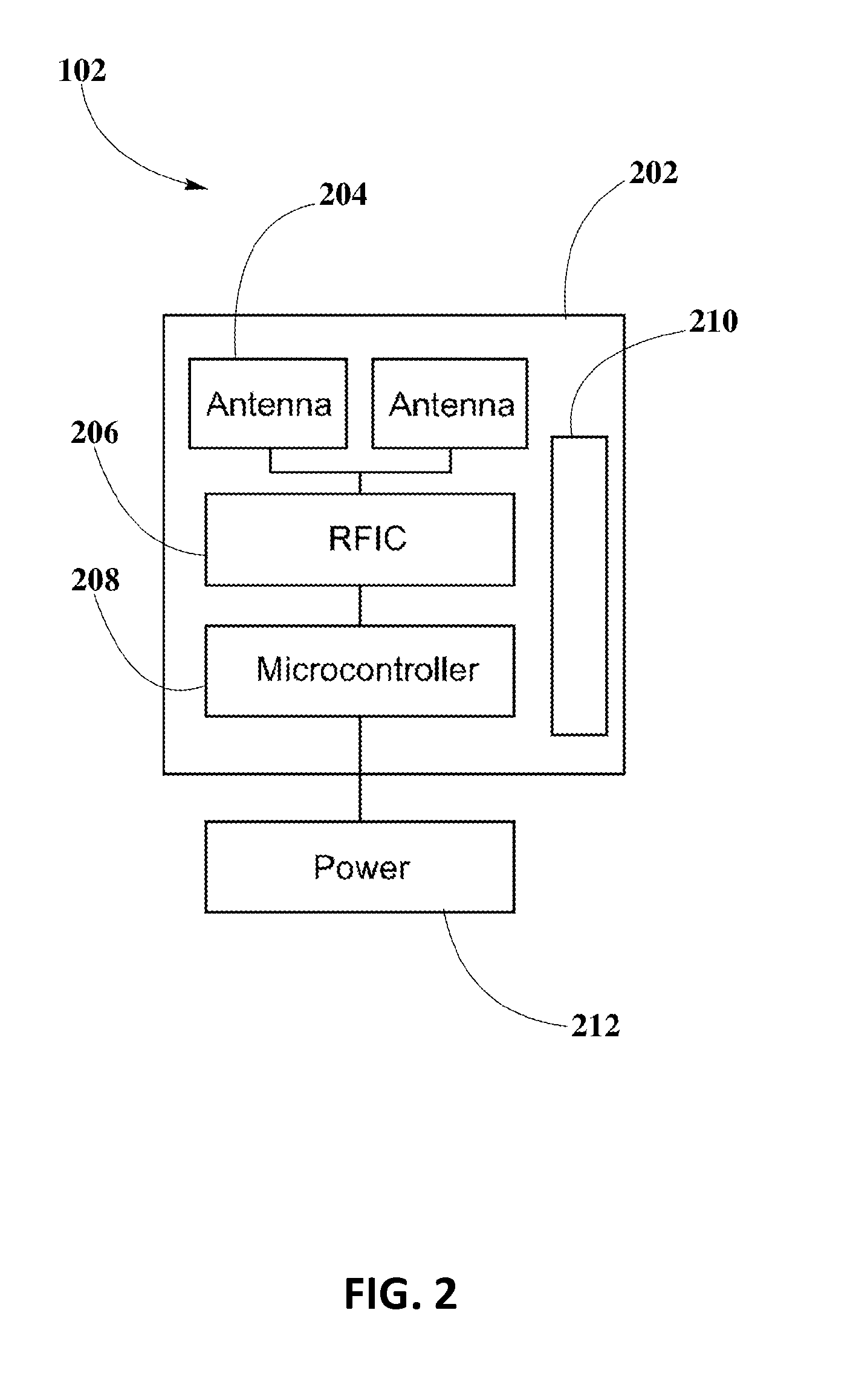Synchronous Rectifier Design for Wireless Power Receiver
a synchronous rectifier and wireless power technology, applied in the field of wireless power transmission, can solve the problems of increasing the amount of power required and consumed by battery-powered electronic devices, inherently inefficient conductors, and inefficiency of diodes, so as to reduce forward voltage drop and improve power transfer efficiency, the effect of less loss switching
- Summary
- Abstract
- Description
- Claims
- Application Information
AI Technical Summary
Benefits of technology
Problems solved by technology
Method used
Image
Examples
Embodiment Construction
[0026]The present disclosure is here described in detail with reference to embodiments illustrated in the drawings, which form a part here. Other embodiments may be used and / or other changes may be made without departing from the spirit or scope of the present disclosure. The illustrative embodiments described in the detailed description are not meant to be limiting of the subject matter presented here.
DEFINITIONS
[0027]As used here, the following terms may have the following definitions:
[0028]“Wireless device” refers to any electronic device able to communicate using one or more suitable wireless technologies. Suitable devices may include client devices in wireless networks and may be part of one or more suitable wireless technologies, including Wi-Fi and Bluetooth amongst others.
[0029]“Wireless transmitter” refers to a device, including a chip which may generate two or more RF signals, at least one RF signal being phase shifted and gain adjusted with respect to other RF signals sub...
PUM
 Login to View More
Login to View More Abstract
Description
Claims
Application Information
 Login to View More
Login to View More - R&D
- Intellectual Property
- Life Sciences
- Materials
- Tech Scout
- Unparalleled Data Quality
- Higher Quality Content
- 60% Fewer Hallucinations
Browse by: Latest US Patents, China's latest patents, Technical Efficacy Thesaurus, Application Domain, Technology Topic, Popular Technical Reports.
© 2025 PatSnap. All rights reserved.Legal|Privacy policy|Modern Slavery Act Transparency Statement|Sitemap|About US| Contact US: help@patsnap.com



